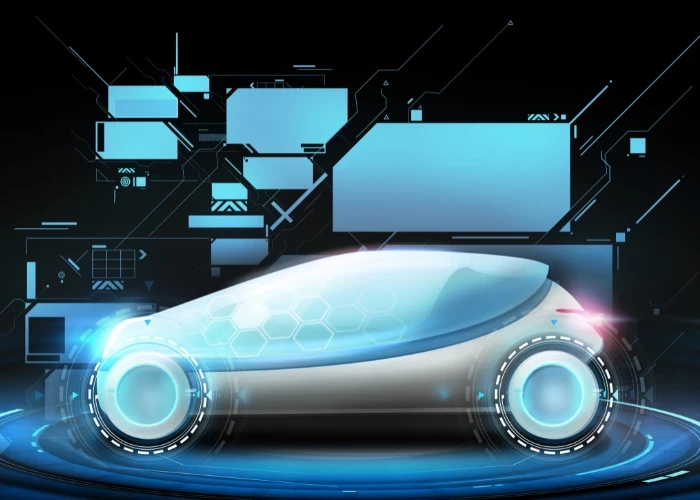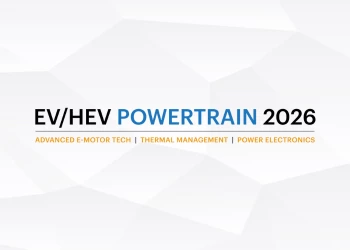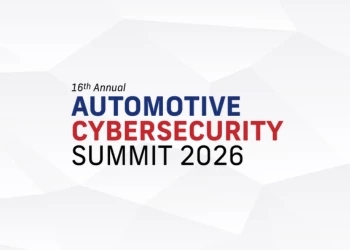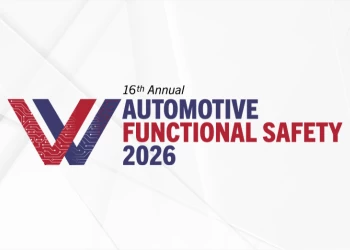Electric vehicles first appeared in the mid 19th century and were so efficient that an electric vehicle held the vehicular land speed record until around 1900.
However, the relatively high cost, low top speed and short range of battery electric vehicles compared to the emerging internal combustion engine vehicles led to a worldwide decline in their use: the very challenges modern EVs face today.
The key to unlocking electrification lies mostly in the electrical energy storage which is both complicated and expensive. This complex puzzle has kept scientists busy for over 150 years now.
And after all these years the only two viable electrical energy storage systems to find their way into commercial use have been the lead-acid battery (invented in 1859) and the relatively new lithium-ion (Li-Ion) battery.
While Li-Ion batteries, first introduced to the market by Sony in 1991, have been around for a mere 25 years, they have entrenched themselves as the storage system of choice for most of the Battery Electric Vehicles currently traversing the world’s roads.
This is in part due to the excellent technical progress made, with the latest lithium-ion batteries typically containing three times the energy of the early Sony storage systems.
Li-ion Batteries continue to improve
Moreover, costs have fallen particularly over the last five years, during which pack prices have fallen from $ 1,300 per kWh in 2011 to below $ 250/kWh today. For example, General Motors is buying batteries from LG Chem for the all-electric Chevy Bolt at an amazingly low price of $ 147/kWh! Many industry insiders are talking about $ 100/KWh by 2020, which would propel BEVs to the top of the charts in the race for clean transportation.
These advances in performance and costing will eventually retire the pocket rechargeable batteries which we currently use, nickel-cadmium (NiCd) and nickel-metal-hydride (NiMh) batteries, to the annals of history. In fact, nickel-cadmium has already had its day, mainly due to environmental concerns around the use of cadmium.
The same applies to motor vehicles. Toyota has been a major proponent of nickel-metal-hydride since it launched the Prius in 1997, but the 2017 model will switch to a lithium-ion battery. This should come as no surprise when one takes a look at the performance of li-ion hybrid battery technology, such as that used in the Ford Fusion Energi plug-in hybrid, which holds about 250 Wh/kg of energy - five times more than a NiMH system, and it can deliver similar levels of power. This means fewer batteries are required to provide a given level of driving range. And as the pricing of lithium-ion batteries is in line with NiMh batteries Toyota’s move makes even more sense.
But it’s not just nickel-cadmium (NiCd) and nickel-metal-hydride (NiMH) batteries that are under threat. Lead-acid will increasingly come under pressure as lithium-ion costs fall, given their power, energy capacity, lifetime and lower charging times. The annual market for lead acid batteries (starter motors for combustion engines, backup power, etc.) at 350 GWh per year is five times greater than lithium-ion at 70 GWh, so the opportunity is enormous!
With expected global sales of about 700,000 EVs this year, the Li-ion battery market is set to attain a record 30 GWh.
Having said that, the real growth opportunity for lithium ion batteries is not the replacement of lead-acid batteries in the automobile or even the hybridization of the motor vehicle, but instead its full electrification.
But Li-ion technology is not without its challenges: Only a month after Samsung announced the Galaxy Note 7 on August 3, the company had to issue a recall of all 2.5 million units sold due to over 100 Note 7 batteries bursting into flames.
The implications of Samsung’s recall extend past the estimated $ 1.35 billion it will cost the company. The recall highlights the technical challenges associated with lithium-ion technology and offers other battery technologies an opportunity to enter the fray.
Has Li-ion battery technology reached the end of the road?
Between Tesla’s “Gigafactory” and China’s 2020 target of five million electric vehicles, the lithium-ion battery has come to represent a clean technology future in which this universal energy storage system dethrones fossil fuels for good. Indeed, the cost of lithium has more than tripled since January 2015 due to increasing demand from the smartphone and electric vehicle markets.
Nevertheless, the reality for lithium-ion remains that the recent incarnations of the 25 year old technology have nearly exhausted their energy storage potential, already reaching the 90 percent threshold of theoretical capacity. The costs associated with pushing the envelope on that last 10 percent of efficiency will only escalate, thereby stalling potential cost reductions.
Furthermore, the climate and environmental goals embraced by the international community will require alternatives to lithium-ion energy storage. By way of illustration: The transport industry contributes roughly 22 percent of global emissions, but the size of any lithium-ion battery capable of entirely powering a freighter, airplane, or heavy-duty truck would prove mechanically infeasible.
Because any battery technology can only store a certain amount of energy per kilogram of mass, the demands placed on further energy density improvements may force manufacturers to look elsewhere.
Life after Li-ion batteries
Recently magnesium-ion batteries have been proposed as a potential alternative to Li-ion electrochemical cells.
Advantages include lower cost and higher abundance of Mg than Li as well as a higher theoretical specific volumetric capacity compared to Li. However, many problems preclude the widespread use of this new technology.
These include poor cyclability, a poor voltage stability window compared to lithium, and the use of complex, expensive electrolytes.
To mediate these issues, optimization of Mg-ion battery components has become a hotbed of scientific research. Much of the difficulty in Mg-ion systems that utilize Mg metal as an anode is that a passivation layer forms on the Mg surface, preventing deposition of Mg ions. Therefore, research has been directed at preventing or circumventing this layer.
Another alternative to Li-ion, sodium-ion (Na-ion), has recently gained increased recognition as a possible candidate for next-generation large-scale energy storage, owing to significant cost advantages stemming from the high natural abundance and broad distribution of sodium resources.
While Na-ion battery materials are not comparable with their Li-ion counterparts, which are one of the dominating energy technologies of this decade, studies are suggesting that Na-ion systems could deliver significant gains.
In an attempt to uplift the performance of Na-ion cells several institutions are focusing their attention on advanced cathode and anode materials:
In the cathode, Li-substituted layered P2−Na0.80[Li0.12Ni0.22Mn0.66]-O2 is under investigation using advanced techniques such as neutron diffraction and nuclear magnetic resonance (NMR) spectroscopy.
In the anode, first principle calculation and X-ray absorption spectroscopy have been combined to unveil the intercalation mechanism of Na2Ti3O7.
Even as EV technologies reach maturity, research into alternative storage systems is uncovering other solutions; such as the zinc-air fuel cell, which shows promise because of its high specific energy, aqueous and nonflammable electrolyte, and zinc’s abundance.
A functional zinc air fuel cell is composed of three parts:
- Zinc metal as the anode
- Separator
- An air electrode as the cathode.
In this cell, the cathode contains a gas diffusion layer and a catalyst layer. Since the oxygen reaction is sluggish, it is important to find a suitable catalyst that can accelerate this reaction.
However, the catalysts used to facilitate both the oxygen reduction reaction (ORR), and the oxygen evolution reaction (OER) are extremely expensive. Therefore, in order to commercialize this system alternatives such as metal oxides are of specific interest.
There’s no doubt that since the commercialization of the Li-ion battery 25 years ago, electrical energy storage has been revolutionized. But to many observers, this is merely a step along the path in search of a more efficient system.
So while the cream of the world’s battery research community gathered in Honolulu to mark the 25th anniversary of the commercial lithium-ion battery, the question has to be asked: Will Li-ion batteries be with us for another 25 years?
Sources:
- J. M. Tarascon; The Li-Ion Battery: 25 Years of Exciting and Enriching Experiences; 2016; http://interface.ecsdl.org/content/25/3/79.full.pdf
- Gerard Reid; Energy and Carbon; Why the future of storage belongs to lithium-ion batteries; December 2016; http://energyandcarbon.com/why-the-future-of-storage-belongs-to-lithium-ion-batteries/
- Steve LeVine; Quartz.com; The pioneer of lithium-ion has been denied a Nobel yet again, and battery researchers are not happy; October 2016; http://qz.com/802253/john-goodenough-the-pioneer-of-lithium-ion-batteries-has-been-denied-a-nobel-prize-yet-again/
- Darrell M. West, Jack Karsten; TechTank; Investment in lithium-ion batteries may crowd out future innovation; October 2016; https://www.brookings.edu/blog/techtank/2016/10/04/investment-in-lithium-ion-batteries-may-crowd-out-future-innovation/
- Laboratory for energy storage and conversion; Beyond Lithium; 2016; http://smeng.ucsd.edu/supercapacitors/



















